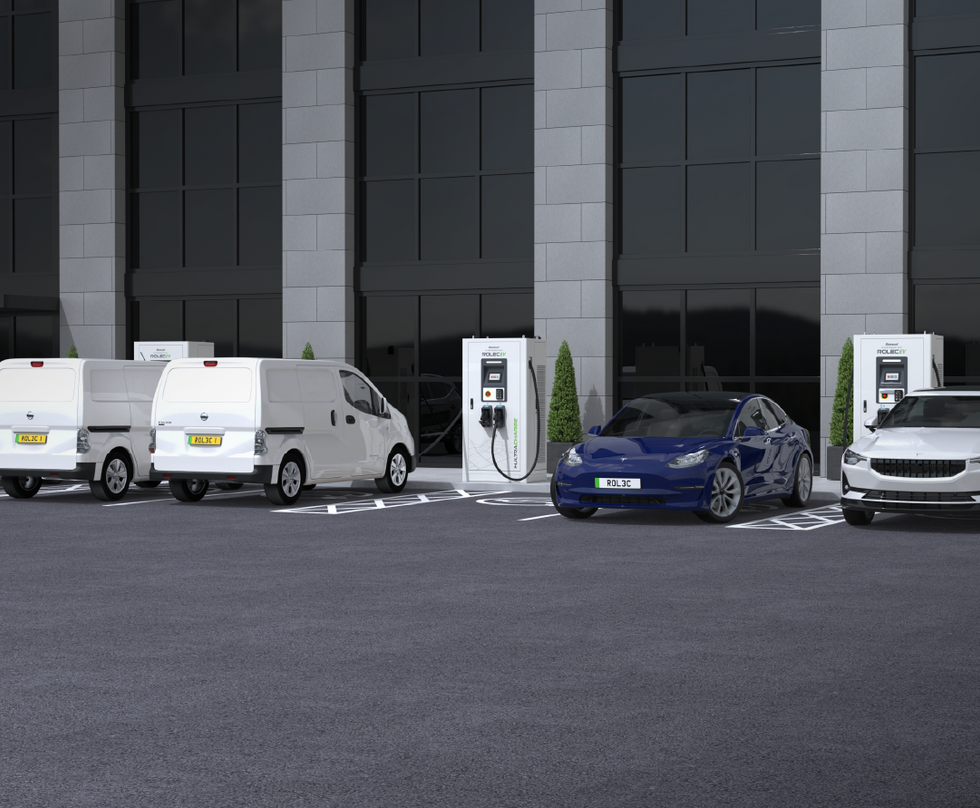
EV Charging
Creating a Fleet Electrification Roadmap
Chloe Sharp
15 December 2025 at 15:57:12
Mark Parkin, Fleet Relations Manager at Rolec EV, discusses how businesses can smoothly transition to a fully electric fleet in the lead-up to the 2030 ICE ban.
The UK’s ‘Road to Net Zero’ may seem far on the horizon, but for fleet operators the transition to zero emission vehicles is only a few replacement cycles away. As with all instances of change, it is inevitable that there will be a period where businesses will need to adjust to no longer relying on fossil fuels. Creating an accurate and realistic roadmap to electrification is the best way to manage this transition as a business.
Moving to a fleet of fully Battery Electric Vehicles (BEVs) shouldn’t feel like a chore. There is actually an array of advantages to transitioning to electric vehicles, such as less maintenance, cheaper running costs and low Benefit in Kind (BiK) tax, that can benefit you as a fleet operator. Taking advantage of these opportunities as they present themselves, before 2030, will leave you in a better position as the transition plays out.
The benefits of BEVs:
Cheaper to run over time.
Lower fuel costs.
Improving the sustainability of the fleet.
VED exempt.
Low BiK tax for employees.
Lower maintenance.
Exempt from clean-air-zone (CAZ) or Ultra Low Emission Zone (ULEZ) charges.
Supported by Government grants and initiatives.

So, how do you begin to transition to BEVs?
The first step to a fully electric fleet is to evaluate your fleet in its current position. How many vehicles does it include? What types of vehicles do you have? What are the operational needs of your business? These are all things that you need to consider before you start placing orders for BEVs.
Once you have collected information on your current fleet, you can then start the process of relating this to EVs available on the market. Match up vehicle size, the typical length of journeys each vehicle makes daily and all other relevant data and find a comparable EV to fit your needs. Do this for every model of vehicle you have in your fleet.
Now that you have a list of vehicles, it's important to hold fire. Don’t start transitioning your entire fleet overnight. Start by lining up your replacement schedule to facilitate a gradual transition. Start with a handful of vehicles, give your employees time to get used to the different driving experience, and then begin to phase in other models. Remember there isn’t a one-size-fits-all template for fleet electrification and part of the process is learning what works for you and investing in it. Which includes training drivers on how to operate EVs and getting them familiar with EV charging infrastructure.
This will also give you time to begin introducing your own charging network. Which comes with its own set of considerations. You will need to decide, among other things, where vehicles will be charging and when, what budget is available to you for units (and installation), as well as what operating system you will use to manage your chargepoint network.
Again, this process will be unique to you and your fleet/business. You may require vehicles to charge on-site overnight, in which case you would be well suited to slower but more cost-effective 7.4kW chargepoints. Or, you may have a fleet that is covering a large area daily that would require rapid top-ups throughout the day. Something that is perfectly suited to DC charging. You may even need a combination of the two.
Here are some additional tips for creating a fleet electrification roadmap:
Get buy-in from key stakeholders.
Do your research.
Set realistic goals and timelines.
Build a budget.
Communicate with your team.
Celebrate your successes.
Once you have decided on vehicles and a supporting charging network, all that there is left for you to do is phase out ICE vehicles for new BEV models. As we suggested earlier, lining this up with your replacement schedule and transitioning your fleet gradually allows you time to manage the changeover on a timescale that suits you and your fleet. Helping you enter into 2030 fully prepared and fully Battery Electric.
For more information on EV Charging, click the link or visit: www.rolecserv.com/ev-charging


